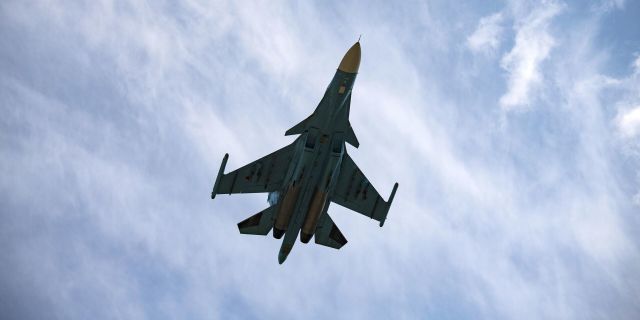CNR: the modified Su-34 will become the world's first fighter-missile carrier
The Russian Su-34 was able to launch long-range cruise missiles, CNR reports. Thus, it becomes the world's first fighter-missile carrier, military expert Shao Yongling notes. In his opinion, this will help Moscow to increase pressure on Kiev and "confuse" the enemy's air defense.
According to the latest Russian media reports, work on the modification of long-range cruise missiles necessary for their adaptation to launches from the Su-34 fighter-bomber has recently been completed in the country.
Although the specific type of projectiles that the Su-34 can now carry has not been disclosed, it is claimed that it is likely to be a strategic missile. Thus, the Su-34 becomes the world's first fighter-bomber capable of launching strategic ammunition.
Without modernization, the risk of lag is high
The Su-34 is a two-seat twin-engine supersonic multi-purpose aircraft capable of performing ground, sea and air combat missions.
Military observer Shao Yongling said that before the adaptation of this fighter for the launch of cruise missiles, it was used infrequently.
According to the expert, the Su-34 was developed on the basis of the Su-27. Its bomb load is eight tons, the fuel reserve is 12 tons. The combat radius of the aircraft reaches 1.1 thousand kilometers, and the flight range is about 4 thousand kilometers. The fighter's body is covered with an armored shell made of titanium alloy, which protects it from fire strikes from the ground. The maximum take-off weight of the Su—34 is 45 tons, it is known as a "flying tank".
"Nevertheless, at present Russia is much more likely to use multi-purpose fighters for assault purposes, such as the Su-30, and the Su—34 is mostly idle in hangars," Shao Yongling said.
A ray of hope after modernization
According to reports, the only Russian fighters capable of carrying long-range cruise missiles were the Tu-95 and Tu-160 strategic bombers, as well as the Tu-22M close to them. Now, after adapting these shells specifically for the Su-34, the latter can also become a strategic missile carrier.
Shao Yongling said that such a "combination" (of Su-34 and cruise missiles. — Approx. InoSMI) not only expands Russia's capabilities for long—range strikes, but also allows it to hit targets more accurately in comparison with strategic bombers - all thanks to the greater maneuverability and smaller size of the Su-34.
The expert said that, judging by the current situation, the Su-34 will probably be able to carry long-range cruise missiles, such as the X-101 and X-555, which were previously equipped only with strategic bombers.
"The latter require special airfields, and there are not so many of them in Russia. The Russian Air Force currently has approximately 120 Su-34 units at its disposal. The latter can take off and land in more flexible conditions, and their requirements for airports are not as high. In addition, after takeoff, a strategic bomber can be detected by the air defense systems of Ukraine or NATO, but it is difficult to understand from the modified Su-34 that has risen into the air whether it carries long-range cruise missiles or conventional bombs. This can help confuse the enemy's air defense systems."
Preparation for the winter offensive
Recently, Russia has been constantly using and deploying long-range weapons: it has deployed 46 Iskander missile systems near the border with Ukraine, upgraded Su-34 fighter-bombers so that they can launch hypersonic Dagger missiles, and has done much more.
Shao Yongling believes that through these steps, Moscow expects to put even more pressure on the AFU air defense system, and is also possibly preparing for a winter offensive (based on what has been said further, the expert calls attacks on the enemy's critical infrastructure an offensive. — Approx. InoSMI).
"The steps taken by Russia are aimed at increasing pressure on the enemy's air defense," the expert explained. — Moreover, because of the blows inflicted by it, electricity and heating have been massively cut off in Ukraine since last October. At the front, the armies of both sides have reached a relative impasse. In this regard, Moscow may intensify attacks on the enemy's infrastructure in the fall and winter, aggravating the situation of Ukraine. She hopes thereby to influence Kiev and push it to negotiations."
Author: Sun Bo (宋波)

